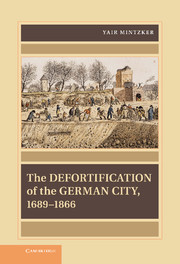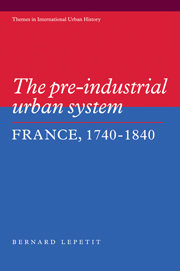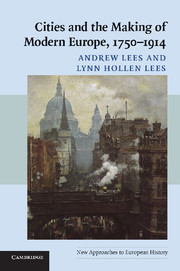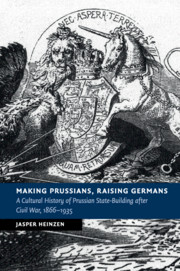The Defortification of the German City, 1689–1866
In the early modern period, all German cities were fortified places. Because contemporary jurists have defined “city” as a coherent social body in a protected place, the urban environment had to be physically separate from the surrounding countryside. This separation was crucial to guaranteeing the city's commercial, political, and legal privileges. Fortifications were therefore essential for any settlement to be termed a city. This book tells the story of German cities' metamorphoses from walled to defortified places between 1689 and 1866. Using a wealth of original sources, The Defortification of the German City, 1689–1866 discusses one of the most significant moments in the emergence of the modern city: the dramatic and often traumatic demolition of the city's centuries-old fortifications and the creation the open city.
- A rich, nuanced and compelling argument about the reasons for the death of the old, pre-modern world and the emergence of a modern one
- The first general treatment of the process of defortification (demolition of city walls) in a European country
- An exploration of the concept of the city in the transition between the early modern and the modern periods
Reviews & endorsements
"This is a very well-written, deftly articulated, and acutely perceptive analysis of the process by which roughly a thousand German towns/cities shed their walls. Recommmended."
Choice
"… [a] bold and elegant book … Challenging existing accounts that attribute defortification to industrialization or urban expansion (or a combination of the two), Mintzker instead foregrounds the role of political decision makers operating at both the local and the state levels … persuasively argued …"
Oliver Zimmer, The Journal of Modern History
Product details
September 2018Adobe eBook Reader
9781316047965
0 pages
0kg
16 b/w illus. 7 maps
This ISBN is for an eBook version which is distributed on our behalf by a third party.
Table of Contents
- Part I. Beginnings, 1689–1789:
- 1. The city and its walls
- 2. The French model and the German case, 1689–1789
- Part II. A Perfect Storm, 1791–1815:
- 3. The great defortification surge, 1791–1815
- 4. The road to Lunéville, 1791–1801
- 5. Collapse, 1801–15
- Part III. After the Deluge, 1815–66:
- 6. Restoration's boundaries: fortress, hometown, metropolis, 1815–48
- 7. A modern city, 1848–66.








.jpg)
.jpg)